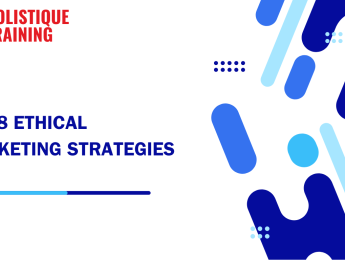Introduction
Employee wellness programs have gained significant attention recently, becoming a cornerstone of modern workplace culture. These initiatives aim to foster a healthier, more productive workforce by addressing the multifaceted nature of employee wellness. This blog post will explore the definition of wellness, the components of effective workplace wellness programs, and their importance, and provide creative examples that can be implemented in various organisational settings.
What is Wellness?
Wellness encompasses more than just the absence of illness; it signifies a holistic state of being that integrates physical, mental, and social well-being. The World Health Organization (WHO) defines wellness as a dynamic state of complete physical, mental, and social well-being, significantly affecting quality of life. This broad perspective recognises that various factors contribute to overall wellness, including lifestyle choices, environment, and emotional health.
At its core, wellness involves proactive efforts to enhance quality of life. It encourages individuals to engage in practices promoting physical health, emotional stability, social connections, and financial security. This multifaceted approach ensures that individuals can navigate life's challenges more effectively, resulting in a more fulfilling and balanced life.
What is a Workplace Wellness Program?
A workplace wellness program is a structured initiative designed to promote employee health and well-being. These programs can take various forms, from fitness challenges and health screenings to mental health resources and educational workshops. The overarching goal is to create a supportive environment that empowers employees to take charge of their health and well-being, ultimately leading to increased productivity, reduced healthcare costs, and enhanced employee satisfaction.
The scope of workplace wellness programs can vary widely depending on the organisation’s culture, size, and available resources. While some programs may focus primarily on physical health, the most effective initiatives adopt a holistic approach, encompassing a range of wellness dimensions.
What Are the Key Elements of a Comprehensive Wellness Program?
Creating a successful workplace wellness program involves incorporating several key elements that address the diverse needs of employees. These components work synergistically to promote a culture of wellness, ultimately benefiting both employees and the organisation. Here are the fundamental elements of a comprehensive wellness program:
1. Physical Wellness
Physical wellness serves as the foundation for overall health and productivity. It encompasses initiatives encouraging regular physical activity, healthy eating, and preventive care. Organisations can facilitate this through various strategies:
- Fitness Initiatives: Accessing on-site gyms, fitness classes, or gym memberships encourages employees to exercise regularly. Offering fitness challenges or competitions can create camaraderie and motivate employees to increase their activity levels.
- Health Screenings: Regular health assessments, including blood pressure checks, cholesterol screenings, and biometric assessments, help employees understand their health status and identify potential risks early on.
- Healthy Food Options: Organisations can promote healthier eating habits by offering nutritious snacks and meals in cafeterias, providing easy access to fresh fruits and vegetables, and hosting cooking demonstrations that teach employees how to prepare healthy meals.
2. Mental Health Support
Mental health is a critical component of overall wellness that significantly impacts employee productivity and job satisfaction. To effectively support mental health in the workplace, organisations can:
- Access to Counselling Services: Confidential counselling services through Employee Assistance Programs (EAPs) help employees address personal and work-related issues. This ensures they have support when facing stress, anxiety, or other mental health challenges.
- Workshops on Stress Management: Conducting workshops on stress management techniques, such as mindfulness, meditation, and relaxation strategies, equips employees with tools to cope with daily pressures.
- Open Conversations About Mental Health: Encouraging an open dialogue around mental health normalises the discussion and helps reduce stigma, creating a safe space for employees to seek help.
3. Nutritional Support
Proper nutrition enhances energy levels, concentration, and overall well-being. Effective nutritional support can include:
- Nutrition Education Programs: Hosting seminars and workshops led by registered dietitians helps educate employees about the importance of balanced diets and provides practical tips for making healthier food choices.
- Healthy Eating Initiatives: Implementing programs that promote healthy eating, such as "Meatless Mondays" or providing healthy food options in vending machines, encourages employees to adopt healthier eating habits.
- Cooking Classes: Cooking classes can empower employees to prepare nutritious meals at home, further promoting healthy eating habits.
4. Emotional Wellbeing
Emotional wellness involves understanding and managing emotions effectively. Organisations can support emotional well-being through:
- Resilience Training: Providing training that focuses on building resilience helps employees cope with adversity and bounce back from challenges.
- Emotional Intelligence Workshops: Workshops on developing emotional intelligence enhance interpersonal relationships and communication skills among employees, fostering a more collaborative work environment.
- Supportive Workplace Culture: Cultivating a culture of empathy and support encourages employees to express their feelings and seek help, contributing to their overall emotional well-being.
5. Social Connections
Social connections play a significant role in enhancing overall well-being. To facilitate strong social bonds among employees, organisations can:
- Team-Building Activities: Organising regular team-building exercises or retreats encourages collaboration and strengthens relationships among team members.
- Employee Resource Groups (ERGs): Establishing ERGs centred around shared interests or backgrounds fosters a sense of community and belonging within the workplace.
- Social Events: Hosting social gatherings, such as potlucks, holiday parties, or volunteer days, creates opportunities for employees to connect outside of work-related tasks.
6. Work-Life Balance
Encouraging a healthy work-life balance is essential for employee satisfaction and retention. To promote work-life balance, organisations can implement:
- Flexible Work Arrangements: Offering flexible scheduling options, such as remote work or compressed workweeks, allows employees to manage their personal and professional responsibilities better.
- Generous Leave Policies: Providing ample vacation time and personal leave encourages employees to take time off to recharge and attend to personal matters.
- Time Management Workshops: Conducting workshops focusing on effective time management skills can help employees balance their workload more efficiently, reducing stress and burnout.
7. Preventative Healthcare
Preventative healthcare focuses on early detection and intervention to avoid serious health issues. Organisations can promote preventative healthcare through:
- Regular Health Screenings: Annual health screenings, flu shots, and wellness fairs encourage employees to prioritise their health and catch potential issues early.
- Education on Preventative Care: Providing resources and information on the importance of vaccinations, screenings, and regular check-ups empowers employees to take charge of their health.
- Access to Health Resources: Facilitating access to health information and services, such as telehealth options or partnerships with local healthcare providers, ensures employees have the support they need.
8. Financial Wellness
Financial stress can significantly impact an employee's mental and emotional well-being. To enhance financial wellness, organisations can provide:
- Financial Literacy Workshops: Conducting workshops on budgeting, saving, and retirement planning empowers employees to make informed financial decisions.
- Access to Financial Advisors: Offering one-on-one consultations with financial advisors can help employees develop personalised financial strategies and improve their financial literacy.
- Student Loan Repayment Assistance: Implementing programs that assist employees with student loan repayment can alleviate financial burdens, particularly for younger employees.
9. Environmental Wellness
Environmental wellness involves creating a work environment that supports physical and mental health. This can include:
- Ergonomic Workstations: Providing ergonomic chairs and desks promotes physical comfort and reduces the risk of injury among employees.
- Sustainability Initiatives: Encouraging sustainability practices, such as recycling programs and energy-saving measures, contributes to a healthier environment for employees and the community.
- Access to Green Spaces: Designing workspaces that include green areas or gardens fosters a connection to nature, enhancing employees’ overall well-being.
10. Holistic Wellness
A holistic approach to wellness considers the interconnectedness of various wellness dimensions. To implement holistic wellness strategies, organisations can:
- Integrated Wellness Programs: Develop programs that simultaneously address multiple aspects of wellness, such as fitness classes that incorporate mindfulness or nutrition workshops that include meal planning.
- Personalised Wellness Plans: Offering personalised wellness plans allows employees to set individual health goals, ensuring wellness initiatives align with their needs and preferences.
- Wellness Champions: Designate wellness champions within the organisation who promote wellness initiatives, engage employees, and serve as role models for healthy behaviours.
By integrating these key elements into a comprehensive wellness program, organisations can create a supportive environment encouraging employees to prioritise their health and well-being. The result is a healthier, more engaged workforce that contributes to the organisation's overall success.
Metric | Description |
Employee Participation Rate | Percentage of employees engaging in programs |
Health Outcomes | Improvements in overall employee health metrics |
Employee Satisfaction | Feedback on wellness programs and services |
Absenteeism Rates | Changes in employee absenteeism statistics |
Productivity Levels | Assessment of employee output and efficiency |
Table: Metrics to measure the effectiveness of employee wellness programs
Why is Having Employee Wellness Programs Important?
Implementing employee wellness programs is not merely a trend; it’s a strategic necessity that impacts the overall functioning of organisations. As workplaces evolve, the focus on employee wellness has become paramount. Here are several compelling reasons why these programs are crucial:
1. Improved Employee Health
One of the most direct benefits of wellness programs is enhancing employee health. By addressing physical, mental, and emotional well-being, organisations can help employees adopt healthier lifestyles. This can lead to:
- Reduction in Chronic Illnesses: Wellness programs that promote regular health screenings, fitness activities, and nutrition education can lower the incidences of chronic diseases such as obesity, diabetes, and cardiovascular issues. Employees are less likely to experience serious health problems when preventive measures are in place.
- Enhanced Mental Health: Support for mental health through counselling services, stress management workshops, and mindfulness training can significantly reduce symptoms of anxiety and depression. This creates a more resilient workforce capable of handling workplace challenges.
2. Increased Employee Productivity
Healthy employees are generally more productive. Employees who feel good physically and mentally are likely to perform better at work. In fact, in organisations that prioritise well-being initiatives, 91% of employees report feeling inspired to deliver their best performance at work, according to the APA. Key factors include:
- Higher Energy Levels: Regular exercise and proper nutrition can boost energy levels, enabling employees to maintain focus and efficiency throughout the day.
- Reduced Absenteeism: With improved health and well-being, employees are less likely to take sick days. This translates to fewer disruptions in workflow and higher overall productivity.
- Enhanced Job Satisfaction: Employees who feel supported in their wellness journey are often more satisfied with their jobs. This sense of fulfilment can lead to greater engagement and motivation to perform well.
3. Decreased Healthcare Costs
Investing in employee wellness programs can lead to significant cost savings for organisations, primarily through reduced healthcare expenses. Consider the following:
- Lower Insurance Premiums: Healthier employees often result in fewer claims filed, leading to lower health insurance premiums for the organisation. Insurers frequently offer incentives for companies with active wellness programs.
- Reduced Medical Expenses: Organisations can mitigate the costs associated with treating chronic illnesses and other health-related issues by promoting preventive care and healthy lifestyles.
- Long-term Financial Savings: The initial investment in wellness programs can yield long-term savings. Studies have shown that organisations can save an average of $3 to $6 for every dollar spent on employee wellness initiatives.
4. Enhanced Employee Retention
Employee turnover can be a significant cost for organisations, both financially and in terms of productivity. Wellness programs can contribute to higher retention rates in several ways:
- Increased Loyalty: Employees who feel valued and supported are likelier to stay with the organisation. Wellness programs signal to employees that their well-being is a priority.
- Attraction of Top Talent: A strong wellness program can be a key differentiator when attracting new talent. Prospective employees often consider wellness offerings when evaluating potential employers, making recruiting and retaining skilled workers easier.
- Cultivation of a Positive Company Culture: A wellness-based culture fosters loyalty and engagement. Employees are more likely to advocate for their organisation when they feel cared for and valued.
5. Boosted Employee Morale
Employee morale is vital for a positive workplace environment. Wellness programs can play a significant role in enhancing morale by:
- Fostering Team Spirit: Activities such as group fitness challenges or wellness events encourage employee camaraderie, building a sense of community and teamwork.
- Encouraging Work-Life Balance: By promoting practices that support work-life balance, such as flexible scheduling and stress management resources, organisations help employees manage their responsibilities, leading to higher satisfaction levels.
- Recognising Employee Achievements: Many wellness programs include recognition initiatives for employees who meet health goals or participate actively. This acknowledgement boosts morale and motivates others to join.
6. Enhanced Company Reputation
Organisations that prioritise employee wellness can improve their public image, leading to numerous benefits:
- Attraction of Clients and Partnerships: Companies recognised for their commitment to employee wellness are often viewed more favourably by clients and partners, leading to new business opportunities and collaborations.
- Positive Workplace Culture: A reputation for prioritising wellness creates a positive workplace culture that attracts talent and fosters collaboration. Employees are proud to work for an organisation that values their well-being.
- Increased Social Responsibility: Companies that invest in employee wellness contribute positively to society. This commitment can enhance corporate social responsibility (CSR) efforts and improve overall public perception.
7. Compliance and Risk Management
Implementing wellness programs can help organisations manage risks and ensure compliance with health-related regulations:
- Regulatory Compliance: Many industries regulate employee health and safety. Wellness programs can assist in meeting these requirements, reducing the risk of legal issues.
- Decreased Workplace Injuries: Programs focusing on physical health, ergonomic practices, and stress reduction can lower the likelihood of workplace injuries, further protecting the organisation from liability.
- Crisis Management: Focusing on employee wellness prepares organisations to respond effectively to crises. Employees with strong mental health resources are better equipped to navigate stressful situations.
8. Comprehensive Approach to Wellness
A successful wellness program promotes a holistic approach to health beyond physical fitness. This comprehensive approach includes:
- Integrating Various Wellness Aspects: By addressing physical, mental, emotional, social, and financial wellness, organisations provide employees with the tools they need to thrive in all areas of their lives.
- Customization and Personalization: Effective wellness programs consider employees' diverse needs, allowing for personalised approaches that cater to individual preferences and circumstances.
- Continuous Improvement: Regular assessments and feedback mechanisms can help organisations refine their wellness programs, ensuring they remain effective and relevant over time.
By implementing comprehensive employee wellness programs, organisations invest in the health and well-being of their workforce and create a supportive environment that fosters productivity, engagement, and long-term success. The benefits extend far beyond individual employees; they contribute to a thriving workplace culture and a sustainable organisational future.
Top 15 Examples of Employee Wellness Programs
Organisations are continuously exploring creative approaches to promote employee wellness. Below are 15 compelling examples of wellness programs that can help enhance employee engagement, health, and overall job satisfaction.
1. On-Site Fitness Facilities
Many companies recognise the importance of physical activity and offer on-site fitness facilities. These gyms provide employees with easy access to exercise equipment and classes, making integrating fitness into their daily routines convenient. For instance, companies like Google and Facebook have extensive fitness centres, yoga classes, and personal trainers, encouraging employees to stay active and healthy.
2. Mental Health Days
Some organisations have offered designated mental health days to combat burnout and promote mental wellness. This allows employees to take time off specifically to focus on their mental well-being without the stigma associated with taking sick leave for stress or anxiety. For example, companies like Bumble have instituted mental health days, recognising that mental health is as important as physical health.
3. Wellness Challenges
Wellness challenges can foster camaraderie among employees while promoting healthy behaviours. These challenges might involve step competitions, healthy eating contests, or mindfulness activities. Companies like SAP have implemented such programs, encouraging teams to compete in friendly competitions focusing on fitness and wellness goals.
4. Flexible Work Arrangements
Promoting work-life balance is crucial for employee wellness. In fact, 72% of employees in the U.S. consider maintaining a healthy work-life balance essential, according to Hubstaff. Flexible work arrangements, such as remote work options, flexible hours, or compressed workweeks, allow employees to tailor their schedules to meet personal and family needs better. Organisations like Dell have embraced flexible working policies, improving employee satisfaction and productivity.
5. Employee Assistance Programs (EAPs)
EAPs provide confidential counselling and support services to employees facing personal or work-related challenges. These programs may offer financial counselling, legal assistance, or mental health support. Companies like Johnson & Johnson provide robust EAPs, helping employees navigate stressors that might impact their overall well-being.
6. Nutritional Support Programs
Many organisations offer nutritional support programs to promote healthy eating habits among employees. This can include nutritionist access, healthy meal options in cafeterias, or subsidised gym memberships with nutrition programs. For example, Whole Foods Market provides employees with nutrition classes and cooking demonstrations, emphasising the importance of healthy eating.
7. Stress Management Workshops
Stress management workshops help employees learn coping strategies and techniques to manage stress effectively. These workshops may cover topics like mindfulness, meditation, and relaxation techniques. Companies like Aetna provide workshops that teach employees practical skills to manage stress and enhance their overall well-being.
8. Health Screenings and Preventive Care
Offering on-site health screenings and preventive care services effectively encourages employees to monitor their health. Many organisations provide annual screenings for blood pressure, cholesterol, and diabetes. For instance, the tech company Salesforce offers comprehensive health screenings and immunisations, empowering employees to stay proactive about their health.
9. Wellness Reimbursements
Some companies provide wellness reimbursement programs that allow employees to receive financial assistance for fitness-related expenses, such as gym memberships, fitness classes, or wellness apps. For example, companies like Zocdoc offer reimbursement for fitness activities and programs, motivating employees to pursue their wellness goals.
10. Group Fitness Classes
Offering group fitness classes, such as yoga, Pilates, or Zumba, fosters a sense of community while promoting physical health. These classes can be held on-site or virtually to accommodate various employee schedules. Companies like Adobe provide regular fitness classes, creating a culture of health and wellness.
11. Family-Friendly Policies
Organisations prioritising family-friendly policies contribute to employee wellness by recognising the importance of work-life balance. This may include parental leave, childcare assistance, or family wellness programs. For instance, Netflix offers generous parental leave policies that allow new parents to take time off to bond with their children, demonstrating a commitment to family wellness.
12. Walking Meetings
Encouraging walking meetings promotes physical activity while maintaining productivity. Instead of sitting in conference rooms, employees can have discussions outdoors or around the office. Companies like Twitter have adopted walking meetings as part of their culture, fostering creativity and collaboration while promoting movement.
13. Financial Wellness Programs
Financial stress can significantly impact employee well-being. Financial wellness programs that include budgeting workshops, retirement planning assistance, and access to financial advisors can help employees manage their finances effectively. For example, Prudential offers financial education programs to empower employees to make informed financial decisions.
14. Volunteer Time Off (VTO)
Many employees find fulfilment in giving back to their communities. Offering Volunteer Time Off allows employees to take paid time off to participate in volunteer activities. Companies like Patagonia encourage employees to engage in community service, promoting social wellness and a sense of purpose.
15. Health and Wellness Fairs
Organising health and wellness fairs can provide employees with valuable resources and information about well-being. These fairs may feature health screenings, wellness workshops, nutrition demonstrations, and fitness activities. Organisations like Intel host annual wellness fairs to engage employees and promote healthy habits.
Implementing a diverse range of employee wellness programs can significantly enhance the overall well-being of the workforce. By creating an environment that supports physical, mental, and emotional health, organisations foster a culture of wellness that leads to increased productivity, job satisfaction, and employee retention. The examples provided showcase the many innovative ways companies can invest in their employees’ health, ultimately resulting in a thriving workplace and a more engaged workforce.
Conclusion
Employee wellness programs are essential for cultivating a healthier, more engaged workforce. By addressing the diverse aspects of wellness—physical, mental, emotional, and social—organisations can create a supportive environment that enhances employee satisfaction and productivity. Integrating creative and comprehensive wellness initiatives fosters a culture that values employee well-being, ultimately benefiting both individuals and the organisation. As the workplace evolves, prioritising wellness will remain a key strategy for attracting and retaining top talent, ensuring that organisations thrive in an increasingly competitive landscape.


























